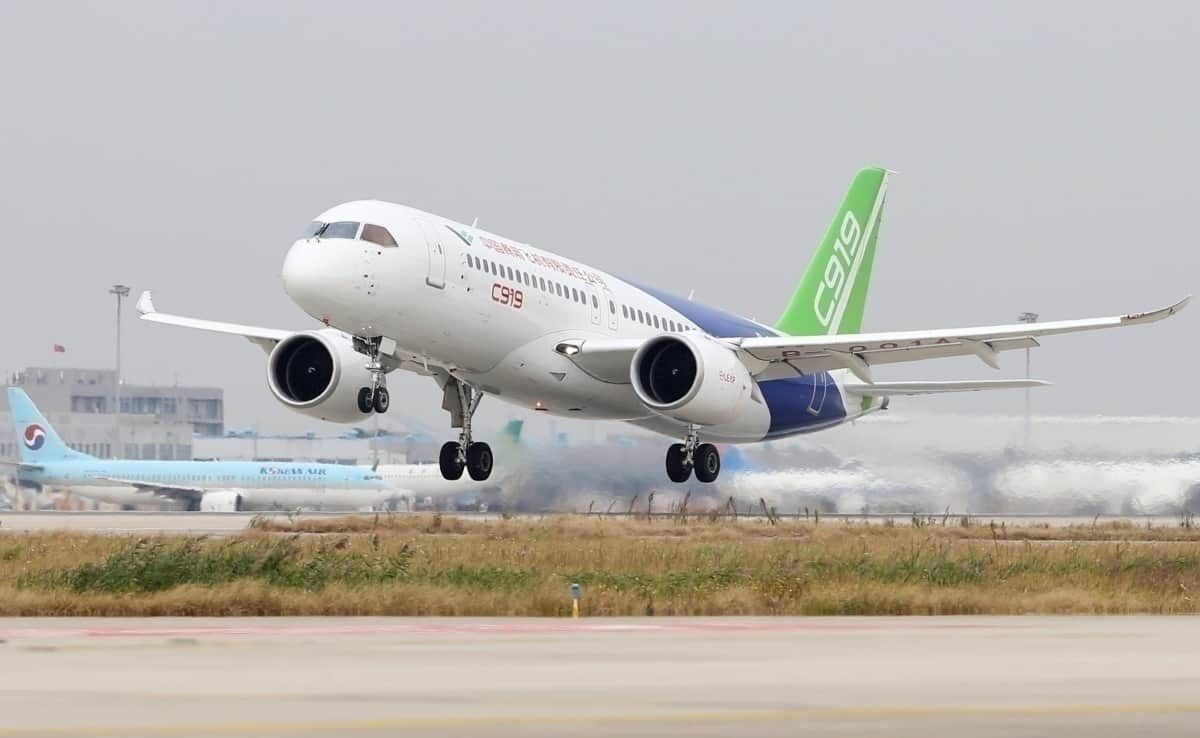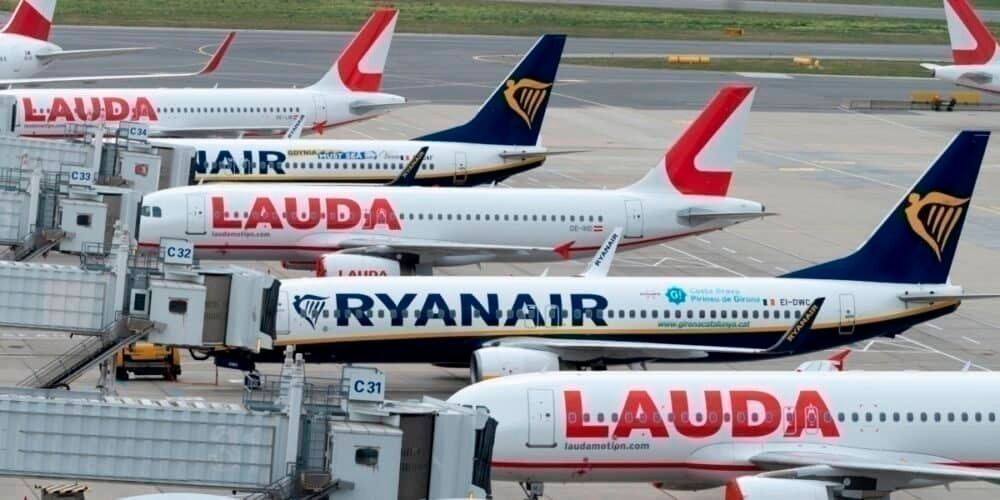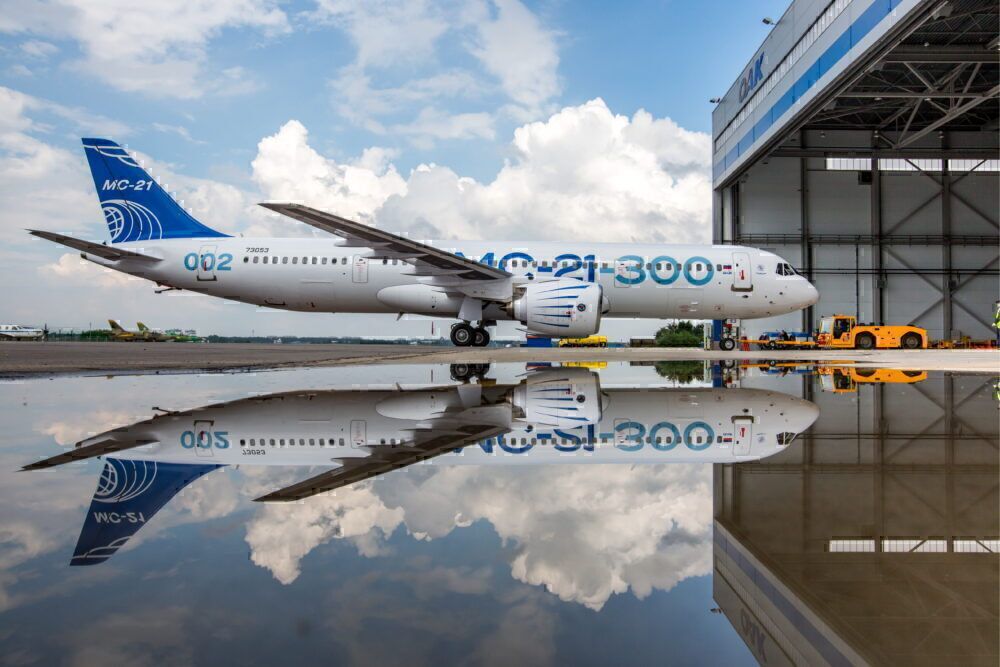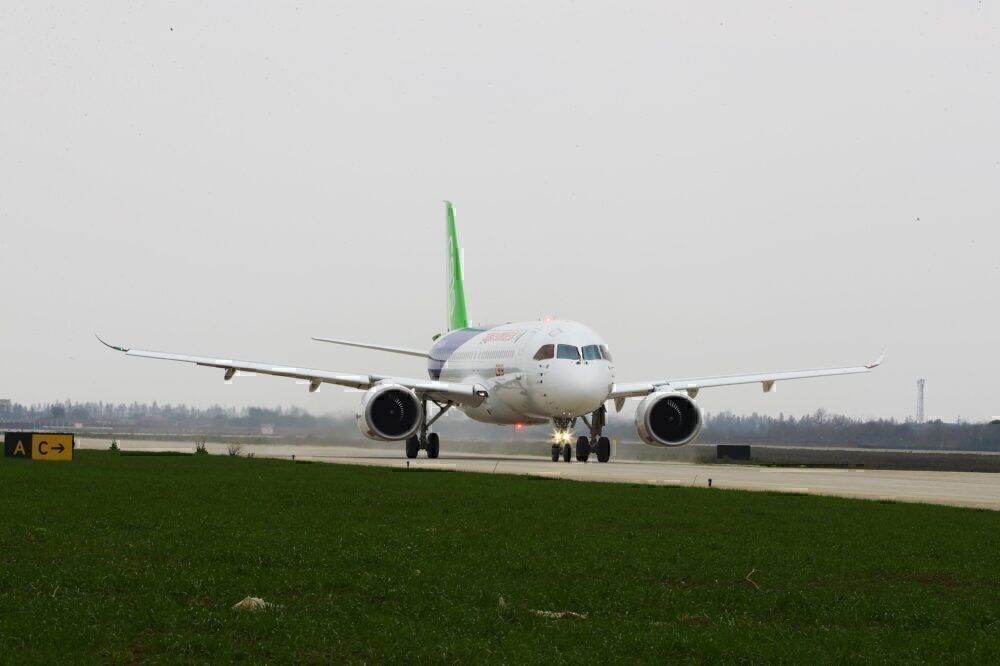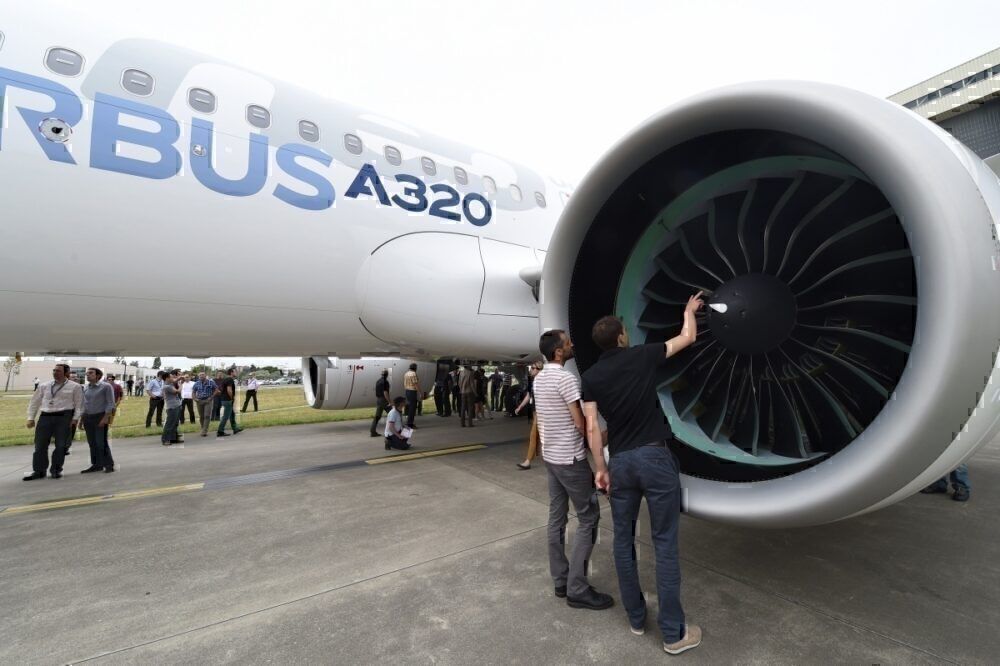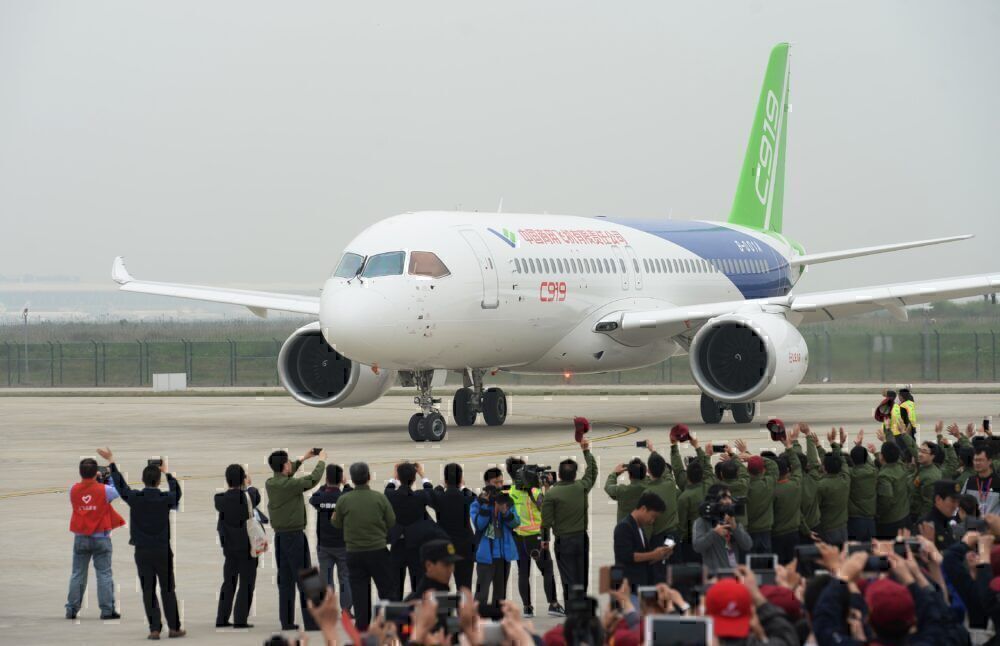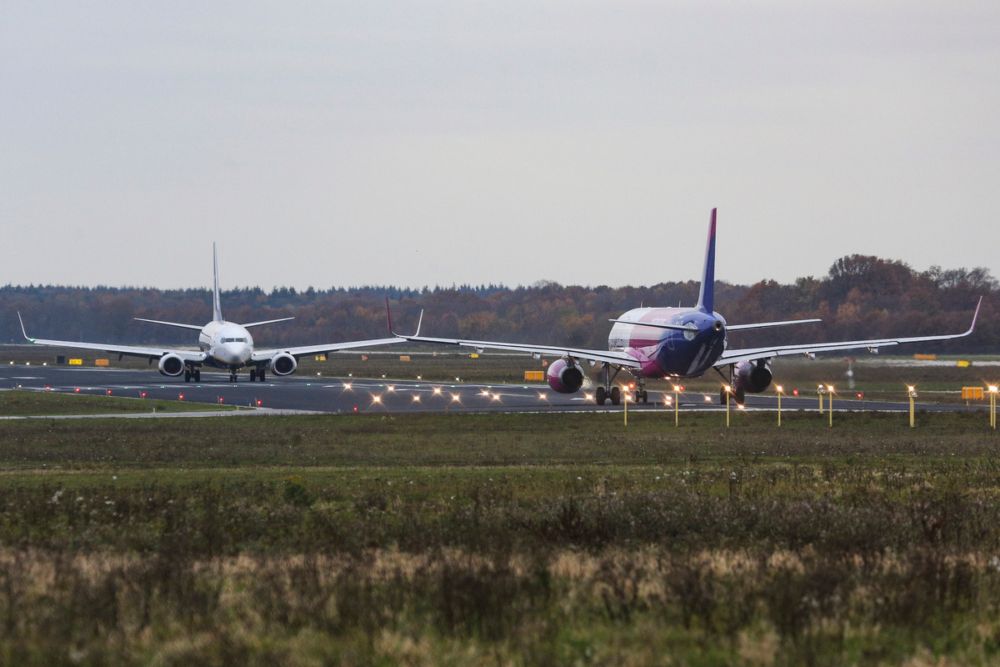For decades, the Boeing 737 and Airbus A320 families have dominated the single-aisle market. Looking to the future, one might expect their next-generation iterations, the 737 MAX and A320neo, to do the same. However, two aircraft set to enter commercial service this year are looking to buck this trend. Let's compare the COMAC C919 and the Irkut MC-21.
What is the COMAC C919?
COMAC stands for the Commercial Aircraft Corporation of China, a Shanghai-based state-owned aircraft manufacturer. Established in May 2008, its first jet aircraft was the ARJ21. Although this regional jet first flew in November 2008, it did not enter commercial service until June 2016. Its launch customer, Chengdu Airlines, also flew its first commercial international flight, reaching the Russian city of Vladivostok in October 2019. The ARJ21 seats between 78 and 105 passengers.
However, for its next design, COMAC is targeting larger markets. Its C919 design first flew in May 2017. This aircraft looks to enter the single-aisle 150-200 seat market. This is an area that is presently dominated by the Boeing 737 and Airbus A320 families. To be successful in this market would represent a significant milestone for Chinese aviation.
Stay informed: Sign up for our daily aviation news digest.
COMAC is aiming to have the aircraft fully certified this year, with its commercial launch with OTT Airlines hopefully following shortly afterward. Many are even considering it to be the future of Chinese aviation. But what about its fellow challenger, the Irkut MC-21?
Stay informed: Sign up for our daily aviation news digest.
What is the Irkut MC-21?
The MC-21 is a Russian-designed airliner produced by Irkut, a branch of the country's United Aircraft Corporation. Irkut is also a parent company of the Yakovlev Design Bureau, which developed the aircraft. The MC-21 has also been subject to extensive delays, as its original introduction was scheduled for 2012.
Much like the C919, the MC-21 eventually took its first test flight in May 2017. However, an area in which it contrasts to the Chinese design is the number of variants of the type. While there is only one C919 variant, the MC-21 boasts both standard (-300) and shortened (-200) variants.
Irkut has produced four examples thus far, with the latest having taken its maiden flight on Christmas Day in 2019. It hopes to make its first deliveries later this year, with Russian flag carrier Aeroflot set to be the MC-21's launch customer.
Comparing the specifications
With both of these aircraft aiming to compete in the same market, it will be interesting to see how they compare on a technical level. After all, if one lags behind the other, how can it be expected to realistically compete with families as established as the 737 and A320?
The rundown of the two designs' vital statistics is as follows. The C919 is listed first, and the MC-21-300 is listed second in each instance.
- Two-class capacity - 158 passengers vs 163 passengers.
- One-class capacity - 168 passengers vs 211 passengers.
- Maximum range - 5,555 km (3,000 NM) vs 6,000 km (3,240 NM).
- Length - 38.9 meters vs 42.2 meters.
- Wingspan - 35.8 meters vs 35.9 meters.
- Height - 11.95 meters vs 11.5 meters.
- Maximum thrust per engine - 31,000 lbf vs 31,000 lbf.
There is generally not much to separate the two aircraft, whose dimensions are near-identical in areas such as the wingspan. However, the MC-21 does come out on top in the crucial fields of range and passenger capacity. If it can transport more passengers on longer flights, this will surely render it a more attractive product for airlines.
Different engines
An area in which the C919 bears parallels to the European and American aircraft it hopes to challenge is in its engine choice. Indeed, it is powered by the CFM International LEAP-1C model. Famously, versions of this powerplant can also be found on the Boeing 737 MAX and A320neo. Particularly in the case of the latter, it has been praised for reducing fuel consumption, as well as noise levels both internally and externally.
Meanwhile, the Irkut MC-21 has a choice of engines. One option is the American Pratt & Whitney PW1000G, which is used on aircraft such as the Airbus A220. However, a Russian-built option is also available - the Aviadvigatel PD-14. This is a brand new design specifically for the MC-21, which Aviadvigatel announced in 2010. It has since also been proposed for use on the Ilyushin Il-276 military transport aircraft.
The first few years of testing on the MC-21 utilized the PW1000G engines, but the Russian powerplants made their debut last year. Irkut revealed the first example with the PD-14 engines in November, and it took its first test flight the following month.
Order numbers
Although neither aircraft has entered commercial service yet, there will be plenty of examples to deliver in both cases when they do. COMAC states that it has received 815 orders for its C919 aircraft. These are spread across 28 customers.
As we established earlier, the MC-21 appears to be the more attractive product in statistical terms. However, this is not reflected in its order numbers. According to FlightGlobal, Irkut has received 175 orders for its 737 MAX/A320neo challenger. While this is not an unreasonable amount, it represents a significantly lower figure than that of the C919. However, with a marquee launch customer in the form of Aeroflot, popularity may grow once it is in service.
Realistic competition for the 737 and A320?
The respectable order numbers show a degree of promise for both designs. However, it appears that the majority have been placed by carriers in both aircraft's respective countries of development. The Russian and Chinese aviation markets are indeed very large, and represent an ideal environment for launching the aircraft.
However, this only gives the aircraft a finite amount of room to grow. The Boeing 737 and Airbus A320 are the second and third-most produced commercial aircraft in aviation history. With decades of service already behind them, it seems perhaps unlikely that either of these challenger aircraft, while admirable, will be able to make much headway into the 150 to 200-seat single-aisle markets worldwide that these two best-sellers have come to dominate. We will see what happens over the coming years nonetheless, and their launches remain highly anticipated.
Which of these aircraft do you think is better? Are either of them realistic challengers for the 737 MAX and A320neo, in your opinion? Let us know your thoughts in the comments!

